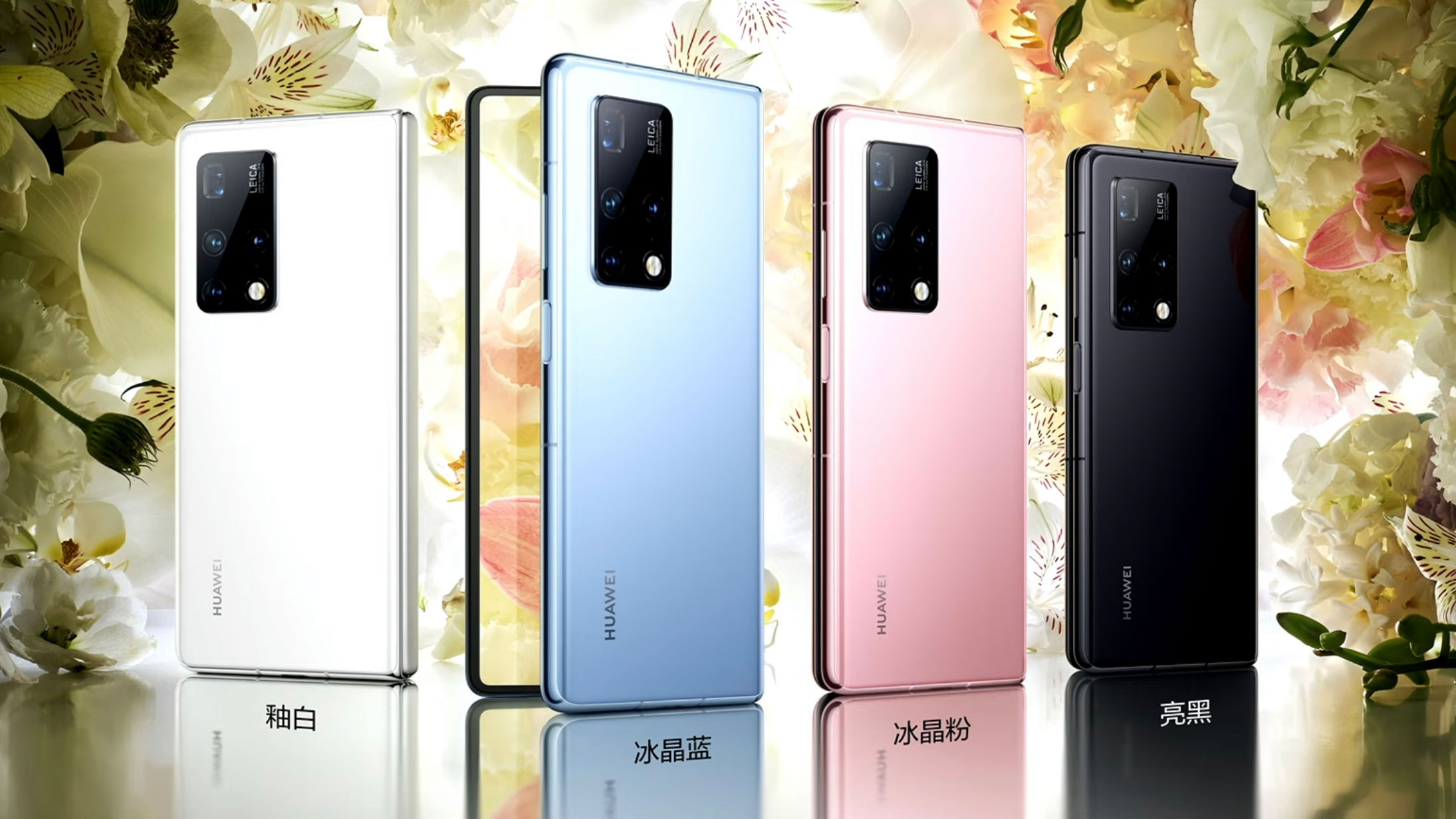Huawei Mate X2 launched as a super-pricey foldable phone with top specs
Giving the Galaxy Fold 2 a run for its money.

The admittedly-quiet foldable phones market has got a new competitor - the Huawei Mate X2 is the company's newest book-style folding handset, and even without the constant comparisons in the phone's launch event, this phone is obviously a Samsung Galaxy Z Fold 2 rival.
Announced in a YouTube video, the Huawei Mate X2 comes with top specs and a super-high price tag, the details of which we'll run you through below. The video is of a launch event hosted in China, but with English subtitles - this implies the phone will stick to the Asian country for now, but could get a global release somewhere down the line.
Costing 17,999 CNY (roughly $2,785, £1,985, AU$3,530) for 256GB of storage and 18,999 CNY (around $2,940, £2,095, AU$3,730) for 512GB, this is an expensive smartphone - if these conversions prove even roughly similar to global launch prices, this will outprice the likes of the Galaxy Z Fold 2, which cost $1,999 / £1,799 / AU$2,999 for 256GB.
- Check out our Huawei Mate Xs review
- We've tested the Motorola Razr (2020) too
- We've ranked the best foldable phones
Huawei Mate X2 specs
Unlike the Huawei Mate Xs, the Mate X2 has a screen on the inside when folded shut, with a secondary display on the outside. The Galaxy Z Fold uses this design too.
The primary screen is 8.01 inches across, with a 2480 x 2200 resolution, and the outer one is 6.45 inches diagonally with a 2700 x 1160 resolution - both have 90Hz refresh rates.
The smaller outer display is broken up by a punch-hole cut-out containing two cameras - 8MP and 16MP units, the latter of which has an ultra-wide lens. The main cameras are housed opposite this outer screen, and they consist of a 50MP primary, 10MP periscope (for 10x optical zoom), 12MP telephoto (for 3x optical zoom) and 16MP ultra-wide snapper.
The Huawei Mate X2 has a 4,500mAh battery - one could argue that seems fairly small for a foldable phone - as well as 55W charging. There's a Kirin 9000 chipset, which should ensure some battery efficiency, and also brings 5G compatibility. There are dual SIM slots too.
Get daily insight, inspiration and deals in your inbox
Sign up for breaking news, reviews, opinion, top tech deals, and more.
During the launch event, Huawei made a point of addressing the two key foldable phone design elements, the hinge and the display. Apparently the hinge has been designed to be as small as possible - indeed, when closed, there's no space between the two sides of the display, unlike in most competing devices. In addition, the crease for this fold is said to be 40% reduced when the phone is open, though it'll likely still be somewhat noticeable.
The two 'sides', if you will, of the Huawei Mate X2 are slightly different thicknesses, and the phone has a gradual taper. It's 4.4mm thick at its thinnest end, though we don't have the exact measurement for its thickest side - this design lets the handset remain skinny, while ensuring there's enough space at its larger end for the camera module.
There are two perks to this - firstly, when the phone is shut, it's said to be completely uniform. Secondly, the phone's center of mass is off to one side, which apparently makes the phone easier to hold one-handed. The Amazon Kindle Oasis ereader takes a similar design philosophy, and it works well there.
In China, the phone goes on sale in four colors - pink, blue, black and white. We're still waiting to hear about global availability, but in China, the Mate X2 will go on sale on February 25.
If and when the Huawei Mate X2 goes on sale elsewhere in the world, we'll let you know. We just hope it's more affordable than the Chinese price.

Tom Bedford joined TechRadar in early 2019 as a staff writer, and left the team as deputy phones editor in late 2022 to work for entertainment site (and TR sister-site) What To Watch. He continues to contribute on a freelance basis for several sections including phones, audio and fitness.